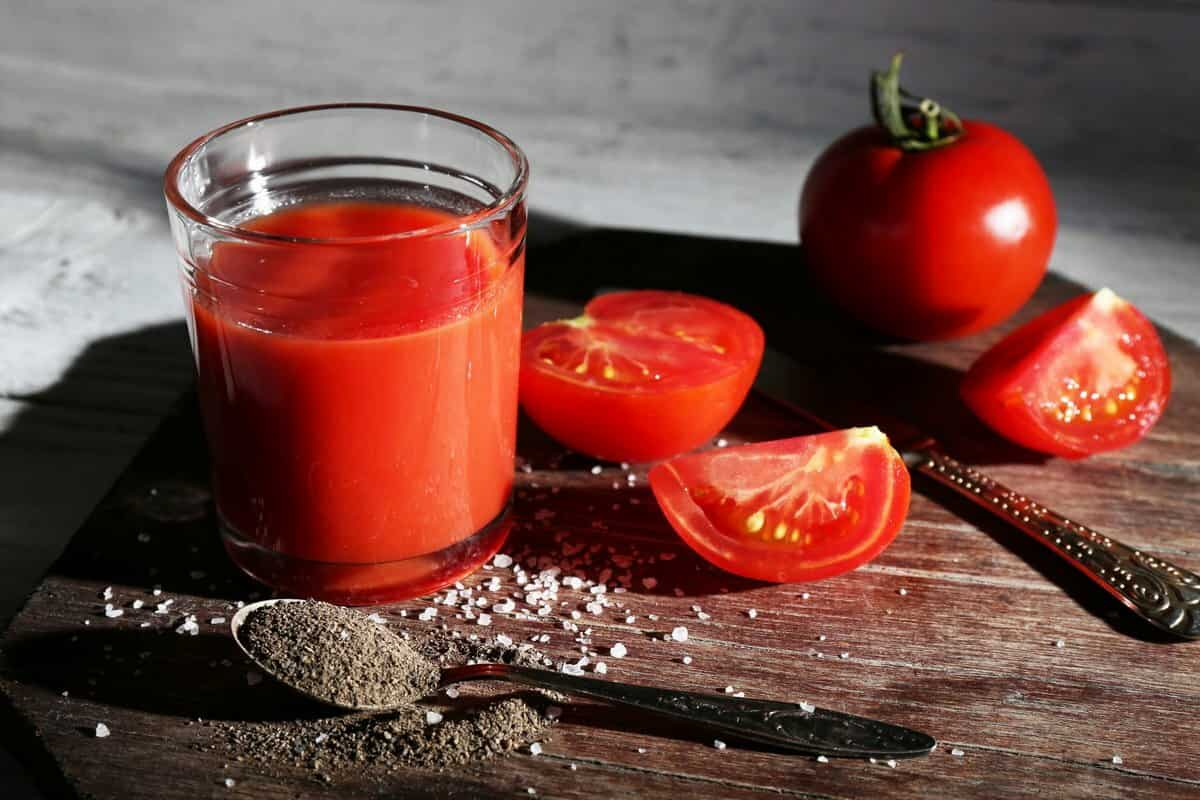Fresh tomato juice is a well-known vegetable juice that is highly regarded for not only having the best flavor but also being simple to prepare because it does not call for any preparation and if you want to know how to make a good one, then this text is proper for you. This all-purpose liquid can be consumed on its own, along with ice, or as an ingredient in various alcoholic beverages. When you have a large supply of fresh tomatoes on hand, turn them into homemade tomato juice that may be preserved by freezing or canning. It is the ideal method for preserving tomatoes while they are in season, whether you buy them at a price that is more affordable than usual or because your garden produces more than you can use right away. When the time comes for tomato soup, you won't have to worry about anything if you have jars of tomato juice on hand. Additionally, it can be thawed in order to make a bloody Mary or a chilled glass of tomato juice. You can keep a frozen stash in your freezer to use for cooking throughout the year if you multiply the amounts in this recipe by two or three and store them that way.

To improve the flavor of the basic juice, you should add as many ripe tomatoes as you can find, as well as some salt and pepper. You are free to add additional seasonings to meet your preferences in this regard. TipsTomato juice can also be prepared using the following other methods if you are pressed for time: Juicer: Put the tomatoes that have been cut into quarters into the juicer and process them. You won't need to use a sieve unless you really want to because the juicer will take care of removing the pulp, skins, and seeds. Bring the juice along with the salt, pepper, and spices of your choice to a boil in a pot. Blender or Food Processor: Put the tomatoes that have been cut into quarters into a blender or food processor and puree them. The skins and seeds can be removed from the mixture by straining it through a sieve. Bring the juice along with the salt, pepper, and spices of your choice to a boil in a pot. How to Preserve Tomato Juice in Jars In order to raise the acidity of the tomato juice so that it may be canned, you will need to add lemon juice (or citric acid).

Because most modern tomato cultivars do not have an enough amount of acid on their own, the pH of the mixture will need to be adjusted after the addition of lemon juice. This eliminates any potential for potentially dangerous microorganisms to thrive in the environment. Sterilize the jars While the jars are still hot, directly pour lemon juice into them at a ratio of 2 tablespoons of lemon juice to 1 quart of tomato juice. Add the tomato juice, making sure to leave a headspace of about a quarter of an inch for the expansion. After cleaning the threads and tops of the jars, place the lids on top and screw them on tightly. Put the jars in a canner that uses a water bath. Jars of a pint's capacity need to be processed for 10 minutes, while jars of a quart's capacity need 15 minutes. Canning should only be done with full jars. Place any that are not completely full in the refrigerator for use right away, or place them in the freezer for use at a later time. After the processing period has elapsed, the jars should be removed from the canner and allowed to cool at room temperature for a full 24 hours before being stored.

First thing in the morning, check to see whether all of the jars have a suitable seal and then reprocess any of the jars that don't. Place the jars in a cold, dark location, and label each one with the current date. If it is canned correctly, tomato juice can be preserved for up to a year. Put the tomato juice in the freezer You can also choose to freeze your tomato juice instead of canning it if you don't want to go through the hassle of preserving it. If you have a small amount of space in the freezer, use bags. After the juice has had time to cool, pour it into containers that are suitable for the freezer, being sure to leave at least an inch of headspace. This will allow for the juice to expand as it freezes. The containers should be labeled, and then they should be placed in the freezer. The shelf life of the tomato juice should be fine for up to a year. You can make individual portions of the juice by freezing it in ice cube trays. When the ice cubes are totally frozen through, place them in a plastic bag that can withstand being placed in the freezer, and then put the bag in the freezer. When you are ready to use the cubes, extract only the amount that you require. There are three warning signs that your tomato juice is going bad: If you aren't sure what to look for, here are three symptoms that your tomato juice may have already begun to spoil: Sour scent. Throw out the tomato juice if it smells particularly sour to you, as this is a sign that it needs to be discarded. Tomato juice has a natural tendency to ferment over time, which may be a contributor to the aroma that is reminiscent of alcohol or vinegar.

Discoloration. When tomato juice begins to spoil, it will gradually transform from its characteristic bright red color to a darker brown hue and develop a thicker consistency. Visible mold. Last but not least, you should toss out the tomato juice as soon as possible if you see any evidence of mold in it, such as a thin layer of white or green fuzz on the surface. If you want to save some of this tomato juice for later use, the most effective way to do so is to refrigerate it after first placing it in a container that will keep air out. As long as you make sure the bottle is sealed well, you should be able to store the juice in the refrigerator for anywhere between 5 and 7 days. I created my own tomato juice; can it be frozen? Absolutely! Utilizing containers that are appropriate for use in freezers is the most effective strategy for freezing your tomato juice (or you can even use an ice cube tray to create a batch of small individual servings). After pouring in the juice, make sure to leave a headspace of at least one inch at the top of the container. This will give the juice room to expand as it freezes. When you are ready to extract the juice from the frozen state, just remove it from the freezer and place it in the refrigerator or thaw it by holding it under running cold water.
